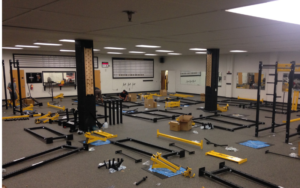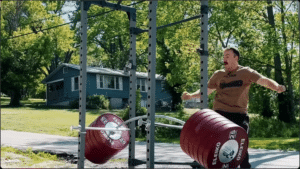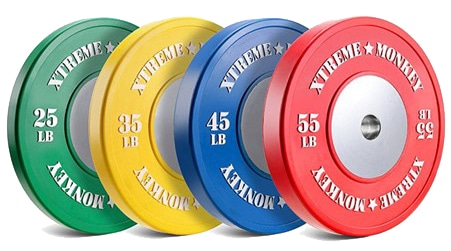BARBELL BREAKDOWN
Tensile Strength
Without going to sciencey, tensile strength is the steel’s ability to bend then return back to straight. Cheap bars bend easily and are permanently warped, the two main tensile strengths are 190k PSI and 215k PSI.
190k PSI
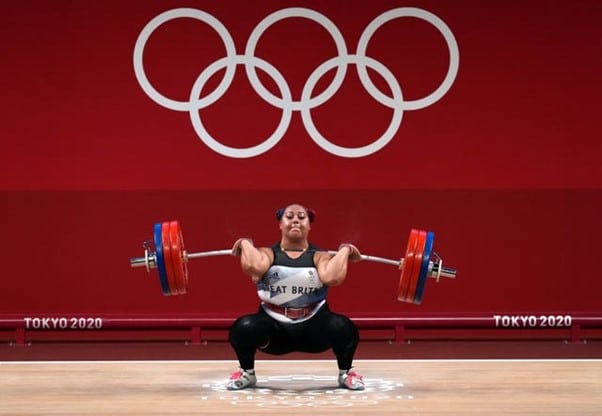
215k PSI
Offers hardly any whip (bend) unless you are lifting a very heavy weight, great for very heavy lifts but not for clean and press or snatch.
Most gyms and 99.9% of gym users are fine with a 190k PSI bar.
Knurl Pattern
The knurl is the rough bit of the bar where you grip, the three parts of the pattern are weight lifting and Olympic lifting grip marks and center knurl.
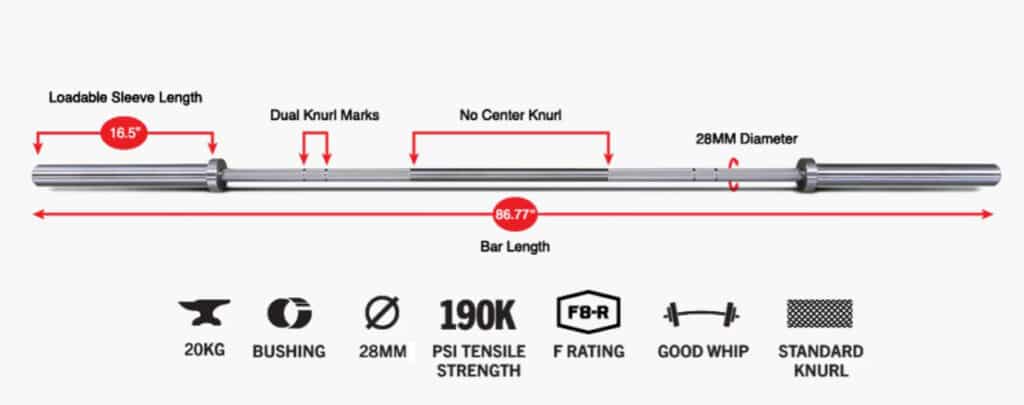
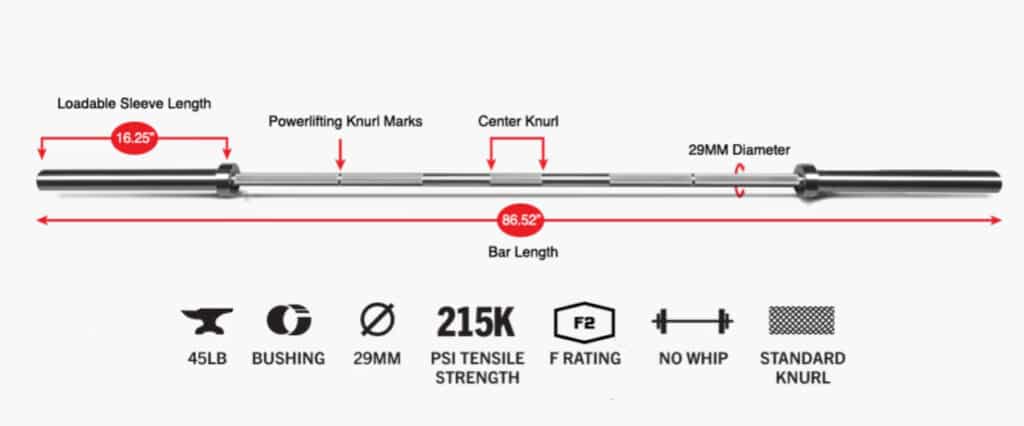
Knurl Intensity
Hill
Hill knurl is what we call a passive knurl. It helps with your grip significantly over a smooth bar but never digs into your hands too much. It allows for grip transitions in a clean where you slide your hands to transition from pulling to pressing. It can slip out of your hands, and even more so when your palms get sweaty, leading to lifters using chalk or lifting straps with hill knurl at a lower weight than the other types of knurl.
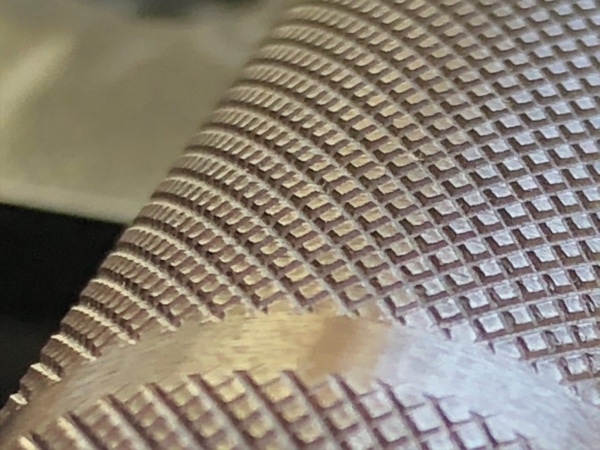
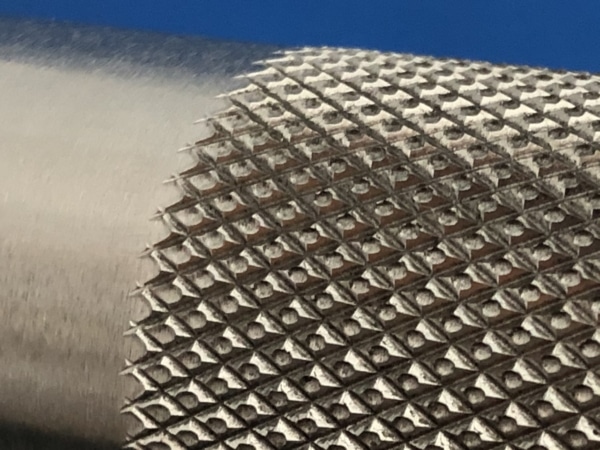
Volcano
Volcano knurl consists of concave-topped hills resembling volcanos.
Why create this pattern? It creates an effect like a finely cut knurl with more mountain peaks. The roughly circular shape of each concave volcano causes each corner of the diamond to be a small peak. More peaks results in a knurl with more contact points that grab your skin better, while each peak is shallow enough that it often doesn’t feel sharp.
Mountain
This knurl is known to feel very aggressive. It’s also been called a pyramid knurl. Each diamond comes to a sharp peak. While the flat tops of a hill knurl feel barely there at all, the deep cuts and sharp peaks of this pattern are the opposite extreme.
The peaks hold your palm in place and prevent slipping, at the cost of some discomfort with the peaks digging into your skin and likely tearing up your skin with high reps. It’s meant for doing slow, low-rep powerlifting movements where you want the bar to stick to your hand and stick to your back when doing squats. The best use cases for this are either lifters who have skin on the tougher end of the scale or heavy lifters who want to avoid the use of chalk or straps. For average lifters, mountain peak knurl can be better than hill knurl for some lifts but is not usually optimal unless the knurl is more finely cut than average, which causes it to feel more like volcano knurl further below.
One other downside to this knurl is re-centering a loaded bar on your J-cups – by trying to spin and shimmy the bar – is harder because the knurl will grip and tear up your J-cups’ UHMW liners.
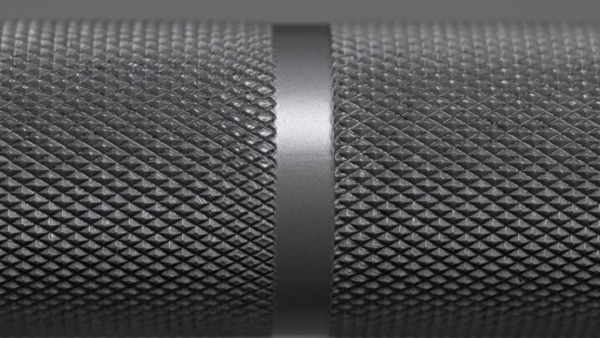
Finish
Bare Steel Bars offer a nice grip with a natural feel. However, bare steel is more likely to rust so will need more regular maintenance.
Stainless Steel offers a similar, some say even better, feeling to the barbell than bare steel. Oxidation protection is very similar to the chrome finish. Stainless steel is usually found on the most high-end weight lifting bars.
Black Oxide – This is a process where the bar is immersed into a bath of hot chemicals to “blacken” the bar. Oil is then applied to the hot bar to seal in the oxide. This type of finish will give you the best feel since it is essentially a bare bar with no plating like Zinc or Chrome. Many bar manufactures choose this as their finish because of the enhanced feel, however this type of finish does require regular maintenance. The more humid your gym is, the more often you will have to maintain your bar(s).
Bright Zinc – This process immerses the bar into a zinc bath where the bar becomes coated with zinc. This gives your bar a non-shiny silver color. The benefit is corrosion resistance. The downside is you lose a little feel and it won’t hold chalk as well as Black Oxide. This finish is a good compromise for those wanting good corrosion resistance and decent feel. Basic maintenance is still required for this finish.
Black Zinc – This requires two finishes to be applied to the bar. The bar is first given the Bright Zinc bath then given a Black Oxide bath to turn it black. The benefit to doing this is the bar is more corrosive resistant due to the Bright Zinc coating and you get the black oxide look. Basic maintenance is still required for this finish.
Hardened Chrome – This is a common finish some manufactures will use to strengthen their bar and to provide excellent corrosion resistance. A power bar is more likely to be finished with Hardened Chrome vs Black Oxide or Black Zinc. Power lifters don’t need to feel as connected to the bar as an Olympic lifter does. This process will add a layer of chromium to your bar and will give it a shiny silver color. The benefit of doing this is an increase in bar strength and excellent corrosion resistance. The downside is the bar will feel slippery, it will not hold chalk well, and the plating can chip off. Little to no maintenance is required for this finish.
Hardened ChromeComposite/Cerakote Originally popularized in the gun industry for its durability in thin applications, Cerakote is a unique polymer-ceramic composite coating—able to deliver wear and corrosion resistance up to 100X that of standard black zinc. As an added benefit, Cerakote can be applied in an almost limitless range of custom colors and designs.
Please take a look at our range of barbells and if you need any help, get in touch.

